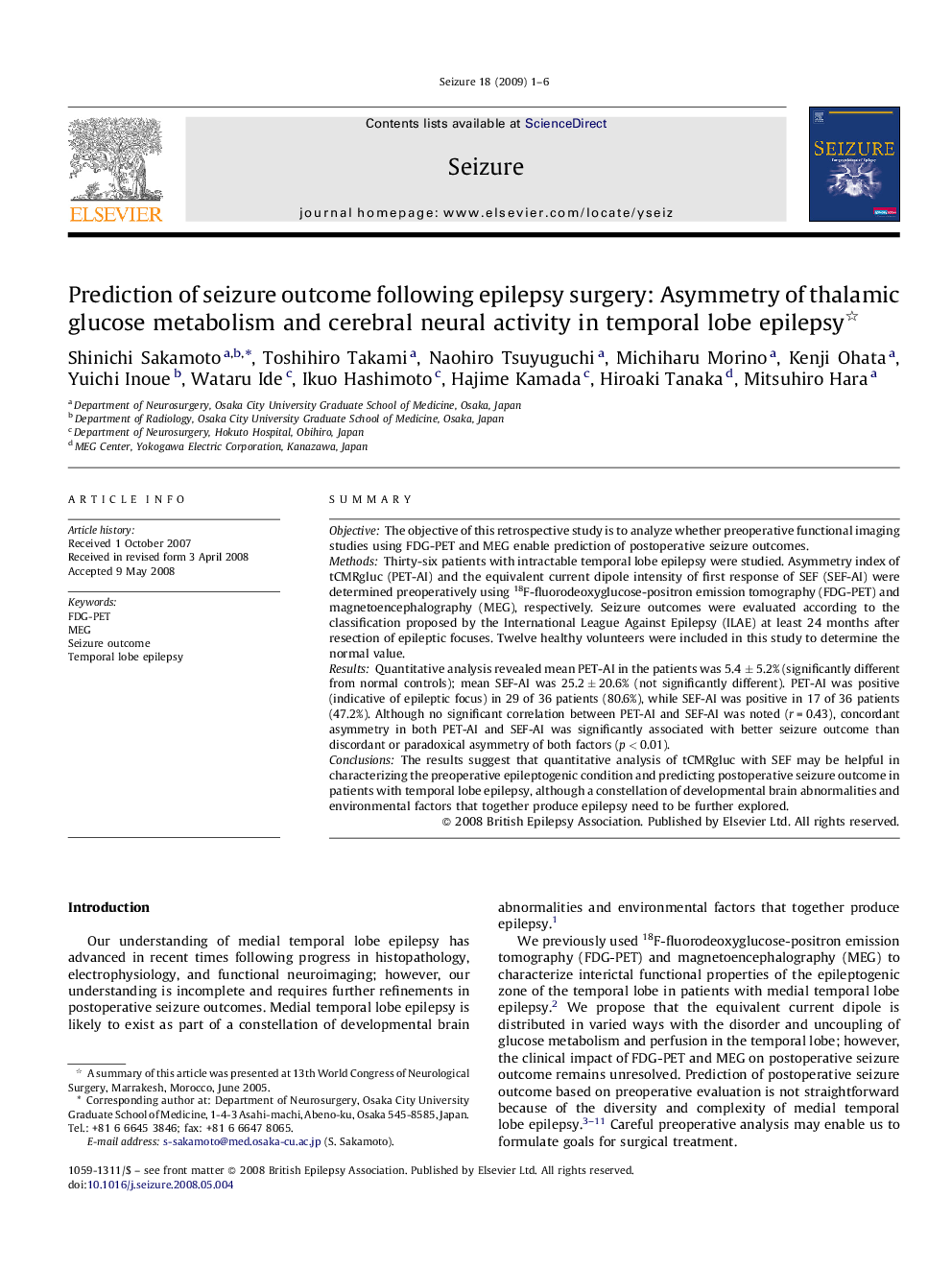| Article ID | Journal | Published Year | Pages | File Type |
|---|---|---|---|---|
| 340796 | Seizure | 2009 | 6 Pages |
SummaryObjectiveThe objective of this retrospective study is to analyze whether preoperative functional imaging studies using FDG-PET and MEG enable prediction of postoperative seizure outcomes.MethodsThirty-six patients with intractable temporal lobe epilepsy were studied. Asymmetry index of tCMRgluc (PET-AI) and the equivalent current dipole intensity of first response of SEF (SEF-AI) were determined preoperatively using 18F-fluorodeoxyglucose-positron emission tomography (FDG-PET) and magnetoencephalography (MEG), respectively. Seizure outcomes were evaluated according to the classification proposed by the International League Against Epilepsy (ILAE) at least 24 months after resection of epileptic focuses. Twelve healthy volunteers were included in this study to determine the normal value.ResultsQuantitative analysis revealed mean PET-AI in the patients was 5.4 ± 5.2% (significantly different from normal controls); mean SEF-AI was 25.2 ± 20.6% (not significantly different). PET-AI was positive (indicative of epileptic focus) in 29 of 36 patients (80.6%), while SEF-AI was positive in 17 of 36 patients (47.2%). Although no significant correlation between PET-AI and SEF-AI was noted (r = 0.43), concordant asymmetry in both PET-AI and SEF-AI was significantly associated with better seizure outcome than discordant or paradoxical asymmetry of both factors (p < 0.01).ConclusionsThe results suggest that quantitative analysis of tCMRgluc with SEF may be helpful in characterizing the preoperative epileptogenic condition and predicting postoperative seizure outcome in patients with temporal lobe epilepsy, although a constellation of developmental brain abnormalities and environmental factors that together produce epilepsy need to be further explored.
